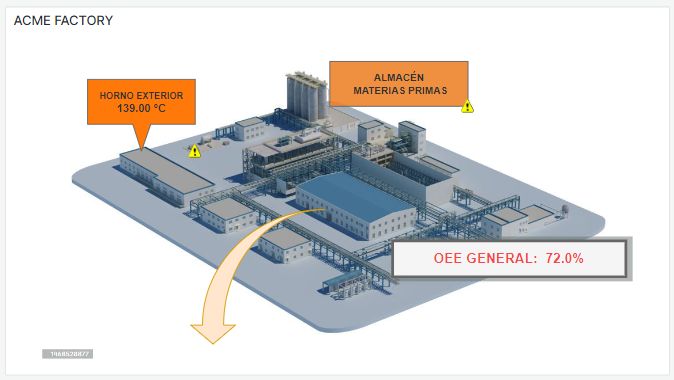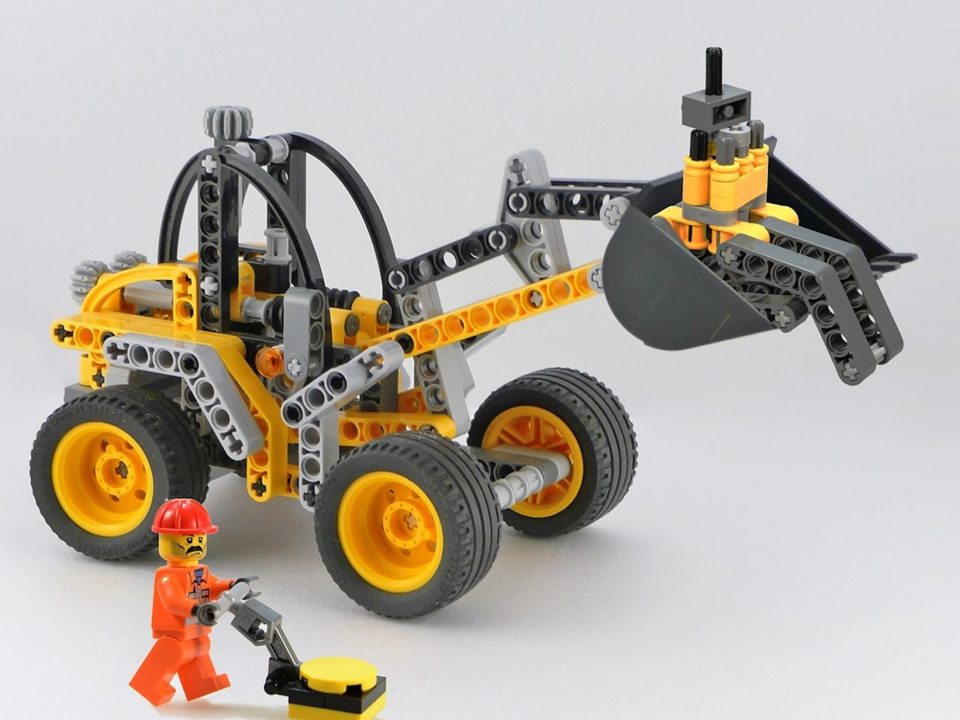
The importance of data visibility in your factory
June 5, 2021
The best Grafana plugins for the Industry
January 31, 2024
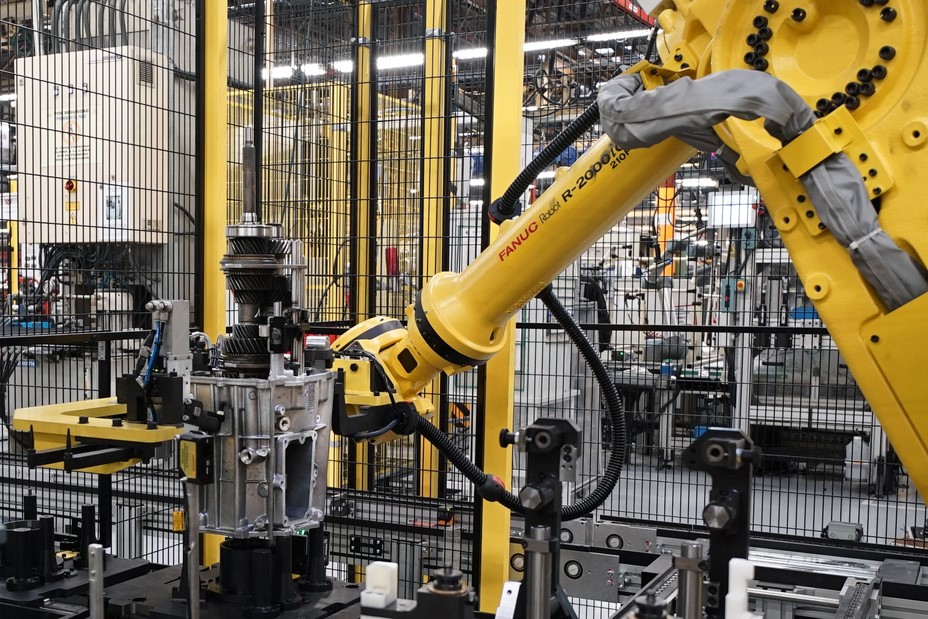
NISSAN POWERTRAIN CASE STUDY
Real-time visibility on robotic lines and machines without connectivity in the automotive sector
We would like to tell you about a monitoring project that we are particularly fond of and that has been carried out for Nissan's Powertrain plant in Barcelona. Here they manufacture transmissions, engines and suspensions for some of the models of the Japanese brand, as well as others such as Renault and Mercedes-Benz.
The plan was to carry out what is known today as "Proof of Value", which seeks to go beyond a proof of concept, although some experimentation was done along these lines. As our technology is already more than proven in the industry, Nissan Powertrain was looking to really see the return they could get from industrial monitoring with real-time visibility.
The project starts the plant monitoring with the incorporation of two very different lines:
The challenge here was to link data from both lines together with data from the self-developed MES system, which contains production targets, shifts, etc. In this way they could calculate OEE, see if it is keeping pace, etc. in real time, without waiting for the end-of-shift or end-of-day report, detecting problems much earlier, thereby increasing production capacity.
The plan was to carry out what is known today as "Proof of Value", which seeks to go beyond a proof of concept, although some experimentation was done along these lines. As our technology is already more than proven in the industry, Nissan Powertrain was looking to really see the return they could get from industrial monitoring with real-time visibility.
The project starts the plant monitoring with the incorporation of two very different lines:
- An automated line (100% robotized and connected). The challenge here was not to connect our Minerva platform to the industrial data collection systems already implemented by Nissan, which is native to our platform, but how to manage that communication so that our platform would adapt to changes in the data and not the other way around. In this way, the alarms and their severities are defined in the PLC and come to our platform dynamically, and then launch notifications and visual warnings.
- A manual line (with old machinery not connected and manually operated). These lines are always a big challenge, as they are very old CNCs and machines that do not have connectivity. In these cases it is usually not worth trying to reverse engineer the machines and we opted, working with the Powertrain team to install a series of sensors.
The challenge here was to link data from both lines together with data from the self-developed MES system, which contains production targets, shifts, etc. In this way they could calculate OEE, see if it is keeping pace, etc. in real time, without waiting for the end-of-shift or end-of-day report, detecting problems much earlier, thereby increasing production capacity.
Implementation process
Although the most attractive thing is always the result, we like to tell the story of the process and the difficulties encountered.- Automatic line: Due to the automatic nature of this line, before starting the project, it already had all the equipment, connectivity and software for data collection. This, together with the management tools already implemented in Nissan, allowed us to easily obtain the data. Here it is usual to fall into the temptation to collect all possible data, with the cost that this represents, but what we did was to work with the Nissan team in deciding what data they might need to answer the questions they wanted to solve with the project and only collect those. The criterion here is to include those that you have doubts about whether they will contribute or not, but always discard those that you are clear that they do not serve the purpose of the project; they can always be added later. Once the data was collected, a process always present in our projects began: the iterations with the client's teams. Through various meetings we iterated on which visualization elements worked better/worse, which filters were needed, colors, alarms, etc. This phase is very important, because what you can think of on paper does not always have to work 100% in the plant. Thanks to the fact that Minerva is a low-code platform, changes are made without taking requirements, putting into production, etc., even in some cases in the meeting itself could be made... in real time too :)
- Manual line: On the other hand, for the manual line, as there was no previous data collection, we had to obtain the data ourselves. For this, different types of sensors were installed, external and easily removable and transferable to another installation, which helped us to study the best possibilities for each situation:
- Consumption sensor: these are small devices, which connected to the current input of a machine allows us to monitor its consumption, thus obtaining different useful parameters. This type of sensors allow us not only to know when the machine is in operation or at rest and its consumption, it allows us to go further and warn the states of this or even make a count of parts produced from an algorithm incorporated into Minerva in this project. It is not always possible to obtain the parts count, but it is always possible to raise an alarm when a machine is consuming, but not producing...
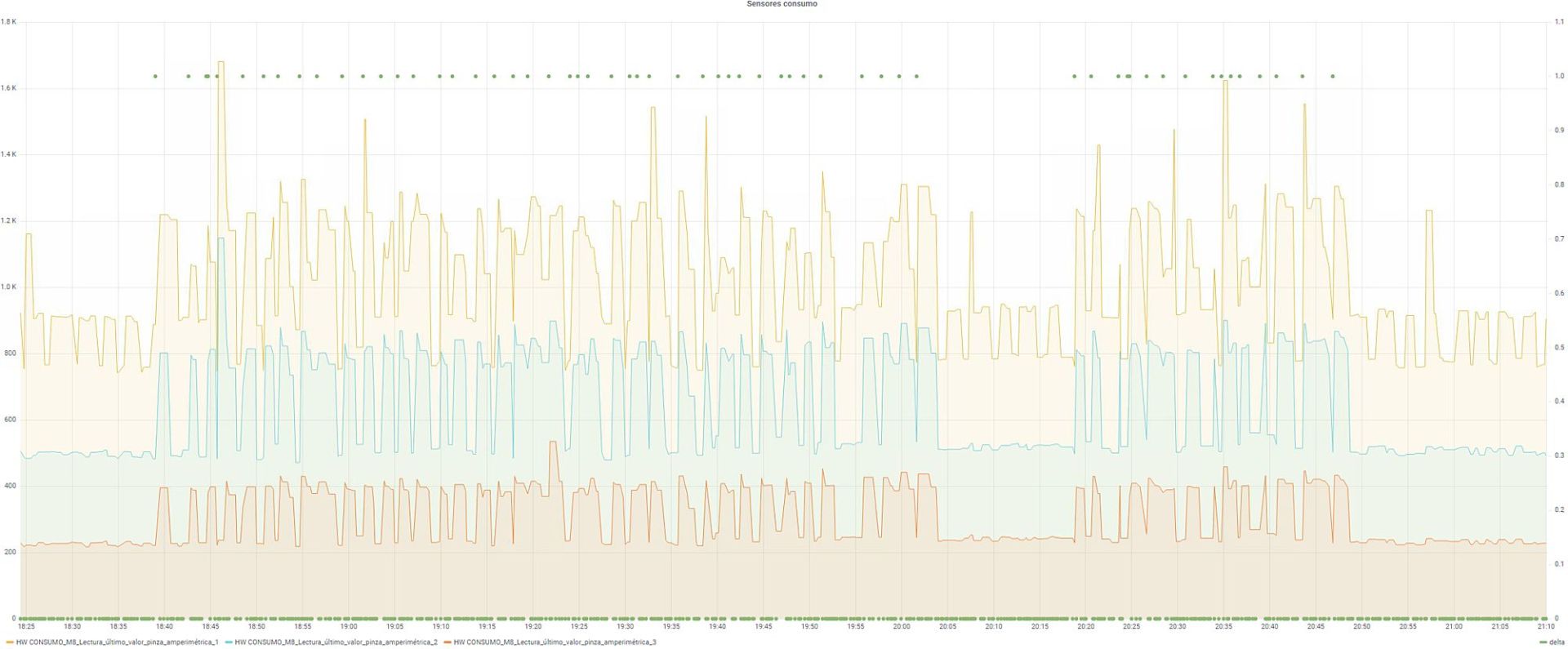
- Beacon sensor: This is a device in the form of a strip, which attached to a machine beacon is able to detect its status and trace it back to our platform. In this way, finished parts, alarms and stop states can be detected on machines without connectivity.
- Inductive sensor: Finally and for the final counting, an inductive sensor was introduced in the last machine of the line, which allows us to directly count the parts it produces, key data to measure productivity and OEE.
- Interaction with management data: Not only focused on obtaining real-time data, another objective of this project was to link these with Nissan's management data. To achieve this, we connected to a self-developed MES system, already implemented for some time in the company and where managers and operators could enter work data manually. By crossing their data with the line data, we managed to unite two worlds, normally separated or only linked through Excel, being able to compare what was planned with reality and being able to add context to the line data, on the same screen!
Benefits obtained
Once it has been put into operation and with the iterations and full involvement of the Powertrain team, these are the main benefits obtained:“The solution has also allowed us to save on structural personnel, since all management is done without having to travel thanks to mobile notifications.”
Miguel Ángel González, Senior Supervisor Machining
“With this solution we have had control of a key line for the factory which, being automatic, is unattended, being able to know and correct its efficiency failures.”
Jorge Ferrís, Ingeniería de Producción y Facilities
Real-time line visibility at a glance
One of the first and fastest was the visualization of information in real time (parts, production rates, cadences, etc.). But thanks to Minerva's calculation capacity, from this input data, we generated calculations of efficiencies, rates, etc. with which to give more value to the information, respond with data to new questions, but above all to be able to know in reality how their lines were working with respect to planning and "theory".As it happens in almost all our projects, being able to share this useful data for day-to-day planning, the Nissan Powertrain team decided to add TV screens in their offices, from which to see the platform in real time, viewing the different lines, at a glance, with their indicators and alarms. In this way they can make informed decisions in real time, minimizing the impact of the problem and thus increasing the efficiency and production capacity of the lines.
It can also be viewed from any mobile device connected to Nissan's corporate network.
In addition, the visualization allows both generic and variable-specific visualization. Advancing from a view of each plant, to the data of each machine, to never see more data than is necessary according to the user profile allowing the solution to scale seamlessly.
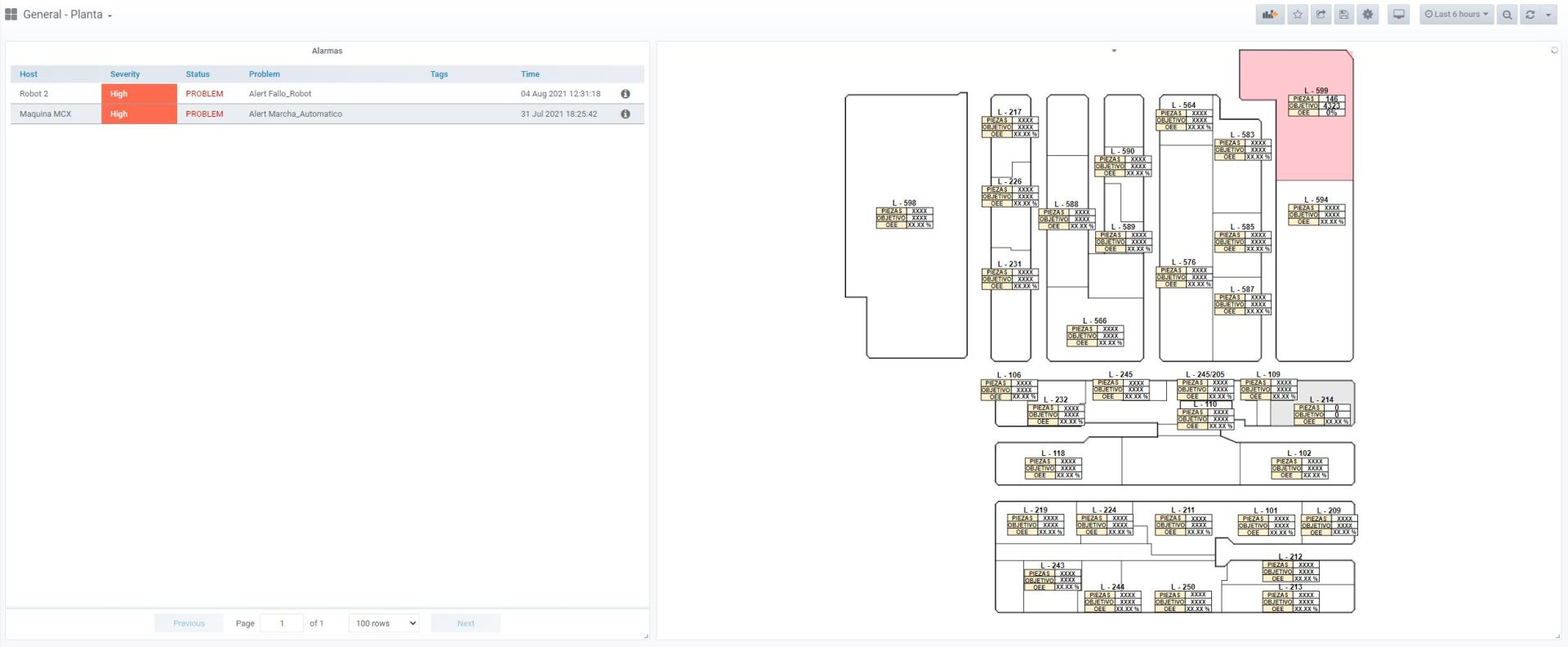
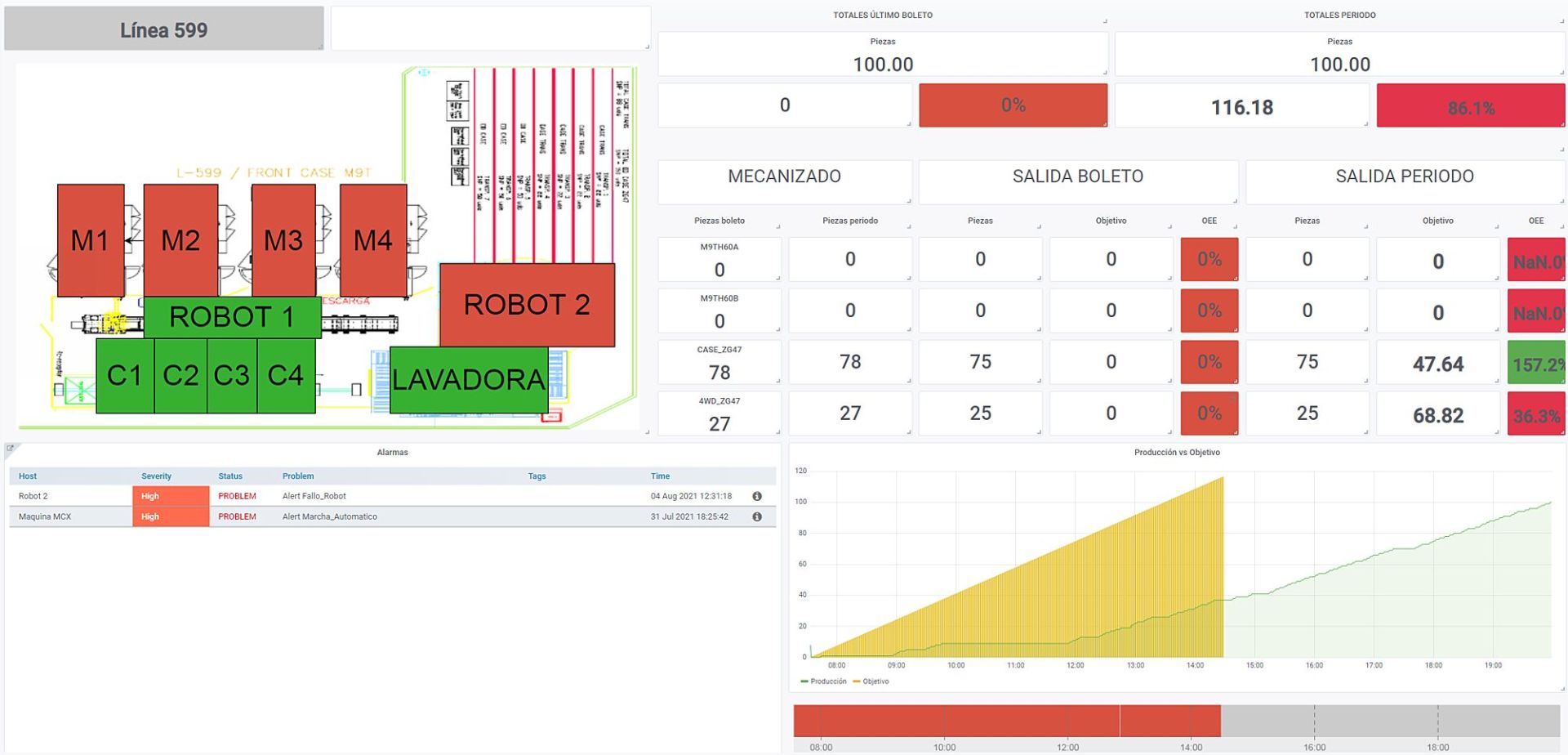
Access to historical data for analysis of problems, bottlenecks, etc.
Besides being able to view data in real time, the tool also stores a history that can be viewed at any time, putting the timeline at any time in the past to see what happened at a particular time or when a certain reference was being manufactured. This history is contextual, as it recognizes shifts and production tickets, allowing it to be used for continuous improvement and analysis to attack the causes that lower OEE. This, in addition, frees intermediate industrial data collection systems from the need to store history and allows other future systems to use it through the platform's API.Reduction of downtime and improved communication
All this data is not only used for visualization, but also for generating alarms and sending notifications to interested parties. For example, one of the most useful functions has been the integration with Nissan's alert platform via SMS, thanks to which, for example, forklift operators are alerted when the machines run out of parts in the feed, or we notify maintenance when there is a problem. The system can be reconfigured according to different shifts, etc., ensuring that the message is delivered to the most appropriate person to deal with it in the shortest possible time.You can of course consult the history of these alarms, as well as leave notes on them, mark them as attended, see the alarm periods, etc.


Specific alarm view with all its statuses over time
Conclusion
Muutech's Minerva platform is a real-time visibility platform for plant decision making and continuous improvement support for manufacturing at Nissan Powertrain, resulting in increased production capacity and efficiency.
CTO & TECHNICAL DIRECTOR
Expert in industrial monitoring and data analytics.
We tell you how to improve decision-making and production efficiency in your plant, without wasting time generating reports. Your plant at a glance!
Subscribe to our Newsletter

